
Interior
The panels are secured using a notches and rails system – not our favourite, but it's relatively easy to work with thanks to the thumbscrews and handles on the panels. As mentioned before, the front pulls cleanly away with ease, but the roof is fixed in position.Peering inside, we were immediately struck by how open the Core 3300 feels, and not just because it's a wide chassis (there's 185mm of CPU cooler clearance, for example). The main reason is the lack of drive cages, as for internal drive mounting Fractal instead utilises a single metal strut that runs between the case floor and the ODD cage. This has the advantage of providing an unobstructed airflow channel from front to back and also leaves loads of space for long graphics cards.
The mounting strut is surprisingly capable, as you can install three 3.5-inch drive and three 2.5-inch drives all at the same time. The drives mount horizontally, and each 2.5-inch drive goes back-to-back with a 3.5-inch one. The catch is that in any one position, 2.5-inch drives must be installed first, as each 3.5-inch drive will block access to its mounting holes and screws. Therefore, if you use lots of drives and need to swap them in and out with some regularity, this isn't a chassis for you, but for most users it won't be much of an issue.
If you don't fancy fiddling around with drives on either side of the mounting bar, it's thankfully very easy to remove it entirely using its three thumbscrews and then replace it again once all your drives are installed. All of the mounting holes for 3.5-inch drives are shielded with anti-vibration rubber grommets too, so all-in-all it's a pretty effective and space-saving design. That said, Fractal points out that one or more hard drives may interfere with side-facing GPU power connectors if your graphics card is longer than 255mm. This means that users of cards with particularly wide custom coolers may run into clashes as well.
There's another pair of SSD mounts behind the motherboard tray, but annoyingly they don't have their own trays. This means you'll need to install them before your motherboard, and also remove your motherboard if you ever need to get them out again.
Optical drives also rely on plain old screws, though as Fractal supplies a big bag opf thumbscrew for this purpose it's still possible to mount them tool-free.
Elsewhere, attention to detail is up to Fractal's usual standards. The CPU cooler cutout is adequately sized for mounting large heatsinks. The tooling and edging throughout the interior is good too, so you won't need to worry about slashed fingers. The metal PCI brackets are fixed with thumbscrews, all the internal cables are nicely sleeved in black and there's even some soft foam padding around the PSU to help stifle vibrations.
The cable routing holes are well-sized and positioned sensibly too – the inclusion of holes above the motherboard tray is always useful for fans and the EPS12V connector, for example. Sadly, there are no rubber grommets on them, though this is a common omission on sub-£60 cases and as there's no window the aesthetic impact is lessened. Space behind the tray should be fine for most users at 22mm and there are lots of hooks that you can use to keep things tied down.
That just leaves water-cooling options to discuss. With cheaper cases we're used to their being little or even no support for water-coolers, but that's not the case here. Naturally, you can fit a 120mm radiator to the rear mount, but the front and roof can both be used with double sized radiators, albeit with size limitations. In the top, there's 44mm of clearance, so you can get away with slimline 280mm or 240mm radiators with slimline fans. Thicker solutions are possible with 240mm radiators (i.e. standard fans, thicker radiator etc.), as there are some offset mounting holes for these. However, any part of your motherboard that extends beyond 37mm will still interfere, so you'll need to measure up. As an aside, it's refreshing to see a company openly publishing water-cooling limitations.
Double radiators can also be fitted to the front fan mounts, and this again includes both 280mm and 240mm models (15mm fan spacing is required for a full fastening). Another advantage of the drive mounting column is that 240mm radiators should have no thickness limitations, though 280mm models are limited to slimline only if you're using any of the 3.5-inch hard drive mounts.

MSI MPG Velox 100R Chassis Review
October 14 2021 | 15:04

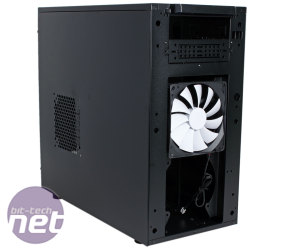
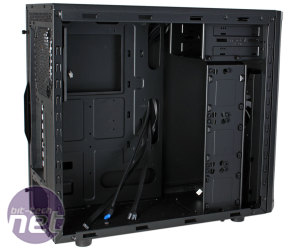
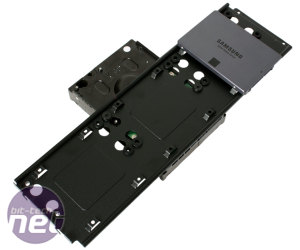
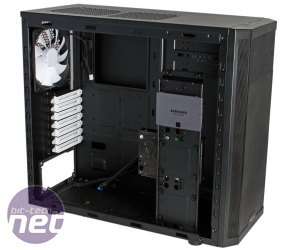
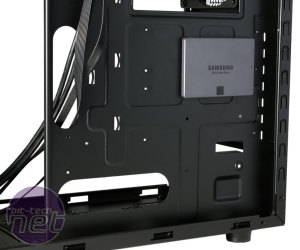
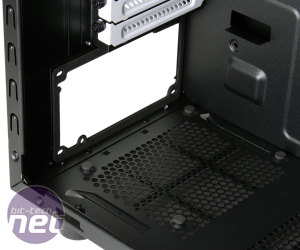
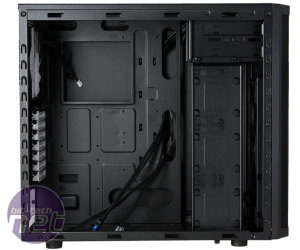
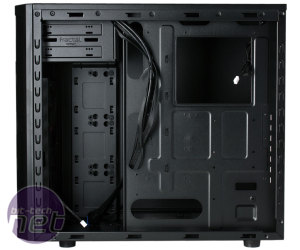
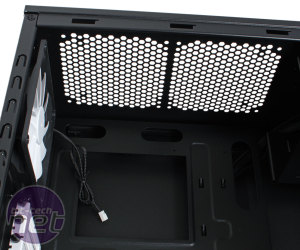
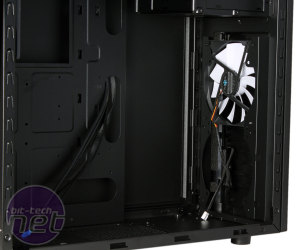







Want to comment? Please log in.